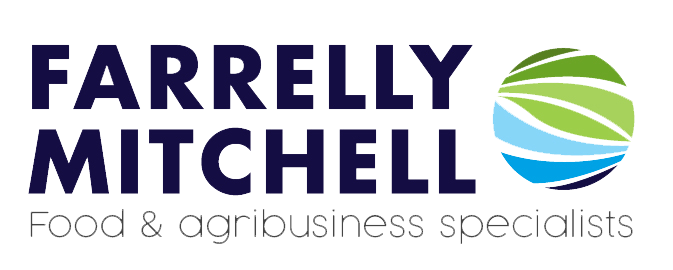Maintaining compliance with food safety and quality standards is a regulatory necessity for food and agribusinesses. However, developing an effective food safety and quality policy requires a thorough understanding of regulation, a commitment to best practice, and a proactive approach to continuous improvement.
Understanding the regulatory environment
At its most basic level, food safety and quality involves adhering to international standards. In the US, food and agribusinesses must comply with the Food Safety Modernization Act (FSMA), alongside guidelines set by Hazard Analysis and Critical Control Points (HACCP) and Good Manufacturing Practices (GMP). In Europe, the same businesses are governed by the General Food Law Regulation(GFLR), while international firms may be subject to the standards set by the Codex Alimentarius. In addition to this, many countries have localised regulations governing their food industry, meaning food safety and quality compliance can vary greatly depending on region, industry, and food product.
While all of these standards focus on identifying and managing risks to prevent foodborne illnesses, contamination, and other hazards, understanding the regulatory requirements can be challenging. The process of adhering to regional standards can be particularly challenging for large international businesses or those with complex supply chains, and diverse product portfolios.
Developing a strong food safety and quality policy
Developing a well-defined food safety and quality policy starts with strong leadership. Leaders must set the tone by prioritising food safety and quality in their decision-making and resource allocation. They must also communicate the importance of compliance to employees and ensure that food safety becomes a shared responsibility. Ultimately, when everyone in the organisation is committed to food safety, compliance becomes a natural outcome rather than a challenge.
Ideally, the policy should be a comprehensive document that outlines the company’s commitment to food safety and quality for every location and at every stage of the supply chain. It should detail how the business will meet various regulatory requirements and illustrate its risk mitigation controls. It should include standard operating procedures (SOPs), hazard analysis plans, corrective action protocols, audit checklists, and records of training programs. This document ensures that all processes are clearly defined, consistently followed, and easily accessible for reference.
Designing effective risk management controls
Creating a food safety and quality policy begins with developing and designing effective risk management controls. This involves identifying and assessing potential hazards that could compromise food safety. Hazards can arise at any stage of the supply chain, from the procurement of raw materials right through to packaging, and may be biological, chemical, or physical in nature. Food safety and quality policies should include comprehensive plans for monitoring such hazards and document the measures to mitigate against them. Additionally, the food safety and quality policy should clearly define the roles and responsibilities of everyone involved in maintaining food safety and quality, from senior management through to operational staff.
Embracing continuous improvement
Policies should encourage continuous improvement, providing a solid framework for regularly reviewing and updating processes. Achieving compliance needs to be viewed as a continuous undertaking, and not a one-time occurrence. Businesses must continually monitor, audit, and educate as regulations and best practices evolve.
Training and routine audits are key to ensuring vigilance within the organisation. Employees – particularly those who are in direct contact with food – must be made aware of the regulations that apply to their specific roles as well as the organisation’s food safety protocols. In particular, employees need to understand sanitary and phytosanitary (SPS) policies. These will likely outline proper personal hygiene, handling, and sanitation standards in the workplace.
To maintain high food safety standards, training programs must be comprehensive and cover all aspects of food handling and processing. Employees should be made aware of Critical Control Points (CCPs) and how to identify, monitor, and report potential hazards if they occur. This includes how to respond to incidents such as contamination or equipment failures. These programs should also be ongoing and continuously updated.
Regular food safety and quality audits help maintain high food safety and quality standards and reinforce employee training. These audits should be comprehensive and developed in line with the food safety and quality policy to ensure that all critical control points are properly monitored and verified. They should cover everything from documentation to employee performance and supplier management.
External audits by third-party certification bodies can also be beneficial. Certifying to internationally recognised standards and benchmarks, such as the International Organization for Standardization’s food safety management system (ISO 22000), Safe Quality Food (SQF), Brand Reputation Compliance Global Standards (BRCGS), and Food Safety System Certification (FSSC 22000), can provide management with an additional level of assurance that their business is committed to food safety and quality.
Managing suppliers and partners
To be fully effective, a robust food safety and quality policy must also extend to the organisation’s suppliers and partners. When partners fail to meet safety and quality standards, it can have severe, even fatal, consequences further along the supply chain. Costly product recalls, reputational damage, and regulatory penalties can quickly arise and cause untold damage if suppliers do not adhere to established protocols and best practices.
Routine supplier audits and strong supplier management protocols can help mitigate these risks. These measures help verify that all partners consistently meet the organisation’s established food safety and quality standards. To further reinforce this commitment, contractual agreements should explicitly outline food safety and quality expectations and cover any additional provisions such as traceability requirements. Organisations should also make a point of evaluating supplier credentials and certifications, such as ISO 22000 or HACCP, as part of their onboarding and vetting processes.
Produce detailed documentation
The final step is to produce detailed records that meticulously documents every aspect of food safety and quality management. These reports should include operational logs, production and processing logbooks, inspection records, traceability documentation, and employee training files.
These documents serve as the foundation for transparency, traceability, and accountability within the organisation. Besides being regulatory requirements, they also act as critical tools for tracking standards and compliance. They enable organisational leaders to analyse past incidents, identify trends, and refine practices.
In the event of a food safety issue, orderly records facilitate effective crisis management by providing a clear history of product handling and processing. This is vital for coordinating responses with regulators and consumers.
Such records can allow businesses to monitor and improve the quality of their products. By analysing records related to ingredients, processing conditions, and distribution, companies can identify trends that affect product quality and implement necessary improvements.
Building a robust food safety framework
An effective food safety and quality policy requires a strategic approach that includes regulatory insight, employee training, supplier management, detailed documentation, and the development of a strong food safety culture.
At Farrelly Mitchell, we understand that integrating food safety standards throughout your organisation’s operations comes with numerous challenges. Our food safety experts help clients develop food safety and quality policies and protocols, implement robust quality control systems, and navigate regulatory and integration issues. Get in touch with us today to learn how we can help your business achieve compliance with the latest policies and regulations.














